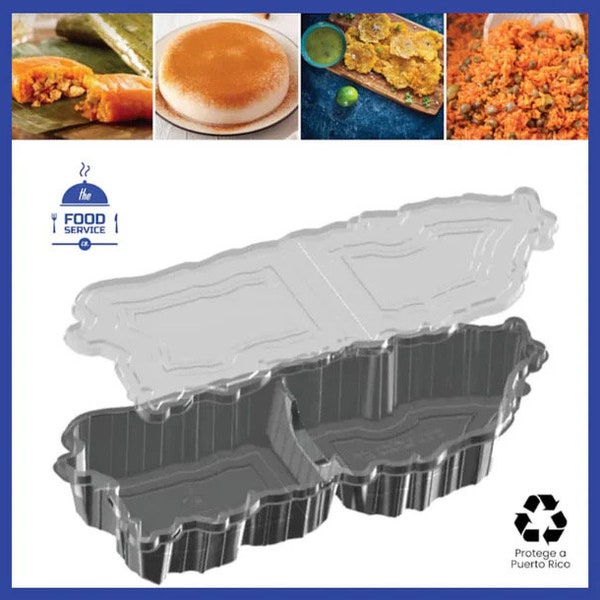Medical Device Transportation

In the world of healthcare and medical technology, the safe and efficient transportation of medical devices is an essential yet often overlooked aspect. From the moment a medical device is manufactured until it reaches the hands of healthcare professionals and patients, a complex journey takes place, ensuring that these devices are delivered promptly, undamaged, and ready for use. This article delves into the intricacies of medical device transportation, exploring the challenges, strategies, and innovations that define this critical process.
The Complexity of Medical Device Transportation

Medical devices encompass a vast array of products, ranging from simple diagnostic tools to sophisticated implants and surgical equipment. Each device has its unique characteristics, requirements, and regulations, making the task of transporting them a challenging endeavor. The complexity arises from several key factors.
Diverse Device Types and Sizes
The medical device industry caters to a wide range of specialties, including cardiology, neurology, orthopedics, and more. Devices vary significantly in size, weight, and fragility. For instance, while small diagnostic kits can be easily packaged and shipped, larger equipment like MRI machines or surgical robots require specialized handling and transportation methods.
| Device Type | Common Transportation Challenges |
|---|---|
| Implants (e.g., pacemakers) | Sterility maintenance, temperature control |
| Surgical Instruments | Sterilization, proper packaging to prevent damage |
| Imaging Equipment (CT, MRI) | Heavyweight, specialized logistics for installation |

Regulatory and Compliance Considerations
Medical devices are subject to strict regulations and compliance standards to ensure patient safety and quality control. These regulations vary across countries and regions, adding an extra layer of complexity to transportation. Manufacturers and logistics providers must adhere to guidelines regarding labeling, documentation, and the safe handling of hazardous materials.
Temperature-Sensitive Devices
Many medical devices are sensitive to temperature variations. For example, vaccines and certain biological samples require strict temperature control during transport, often demanding specialized cold chain logistics. Maintaining the integrity of these products is crucial to their effectiveness and patient safety.
Time-Critical Deliveries
In emergency situations or for time-sensitive treatments, medical devices must be delivered swiftly. This requirement adds urgency to the transportation process, demanding efficient logistics planning and rapid response capabilities.
Strategies for Effective Medical Device Transportation

To overcome the challenges posed by the diverse and complex nature of medical devices, transportation professionals employ a range of strategies and best practices. These strategies aim to ensure the safe, timely, and cost-effective delivery of medical devices, ultimately supporting healthcare providers and improving patient outcomes.
Specialized Packaging and Handling
The first line of defense for medical devices during transportation is appropriate packaging. Manufacturers and logistics providers invest in packaging solutions tailored to the specific device’s needs. This may include custom-designed containers, shock-absorbing materials, and humidity control systems to protect devices from damage and contamination.
Additionally, specialized handling techniques are employed to ensure devices are not damaged during loading, unloading, and transportation. This involves training logistics staff on the proper handling procedures for different device types and implementing quality control measures to identify and rectify any handling-related issues promptly.
Adherence to Regulatory Standards
Complying with regulatory standards is non-negotiable in the medical device transportation industry. Logistics providers must stay updated with the latest regulations and ensure that all devices are transported in compliance with these standards. This includes proper labeling, accurate documentation, and the safe handling of any hazardous materials that may be present.
Temperature-Controlled Logistics
For temperature-sensitive devices, maintaining the required temperature range is critical. Cold chain logistics plays a vital role in ensuring that these devices are not compromised during transit. Specialized refrigerated trucks, containers, and packaging are used to maintain the desired temperature, with real-time monitoring systems to track and control the environment.
Efficient Route Planning and Tracking
Efficient route planning is essential to ensure timely deliveries while minimizing costs. Transportation providers utilize advanced route optimization software to identify the most efficient paths, taking into account factors like traffic conditions, weather, and the specific requirements of the medical devices being transported. Real-time tracking systems allow for constant monitoring of shipments, enabling quick responses to any delays or issues.
Collaboration and Communication
Effective communication and collaboration among stakeholders are key to successful medical device transportation. This includes close coordination between manufacturers, logistics providers, healthcare facilities, and regulatory bodies. Regular updates and transparent information sharing ensure that all parties are aware of the device’s status, any potential delays, and the measures being taken to address them.
Innovations Transforming Medical Device Transportation
The medical device transportation industry is witnessing significant innovations that are revolutionizing the way devices are moved. These innovations aim to enhance efficiency, reduce costs, and improve the overall quality of the transportation process.
Advancements in Packaging Technology
Packaging technology has seen significant advancements, with the development of new materials and designs that offer enhanced protection for medical devices. For instance, the use of advanced polymers and composite materials provides better shock absorption and insulation, reducing the risk of damage during transit. Additionally, smart packaging solutions, equipped with sensors and RFID tags, enable real-time monitoring of environmental conditions and device location.
Automation and Robotics
Automation and robotics are being increasingly adopted in medical device transportation to improve efficiency and reduce human error. Automated sorting and packaging systems streamline the loading process, while robotic arms can handle fragile devices with precision, minimizing the risk of damage. Furthermore, autonomous vehicles and drones are being explored for the last-mile delivery of medical devices, particularly in remote or hard-to-reach areas.
Data Analytics and Predictive Modeling
Data analytics plays a crucial role in optimizing medical device transportation. By analyzing historical data and real-time information, logistics providers can predict potential delays, identify high-risk areas, and make informed decisions to mitigate these risks. Predictive modeling helps in route planning, enabling transportation providers to choose the most efficient and cost-effective paths.
Blockchain for Supply Chain Transparency
Blockchain technology is being leveraged to enhance supply chain transparency and traceability in medical device transportation. By recording and storing data on a blockchain, stakeholders can access real-time information about the device’s journey, including its location, handling history, and any changes in environmental conditions. This improves accountability and helps identify any issues that may arise during transit.
Future Implications and Challenges
As the medical device industry continues to evolve, so too will the challenges and opportunities in its transportation. The increasing demand for personalized medicine and precision healthcare will drive the need for more customized and flexible transportation solutions. Additionally, the rise of medical tourism and the growing emphasis on patient-centric care will further emphasize the importance of efficient and reliable medical device transportation.
One of the key future challenges will be ensuring the sustainability of medical device transportation. This includes reducing the environmental impact of logistics operations, such as minimizing carbon emissions and waste generation. Additionally, the integration of electric and alternative-fuel vehicles into transportation fleets will be a focus area, contributing to a greener and more sustainable industry.
In conclusion, the transportation of medical devices is a complex and critical process that requires specialized strategies and innovations to ensure safe and efficient deliveries. As the medical device industry continues to advance, so too must the transportation sector, adapting to meet the unique and evolving needs of this vital field.
What are the key challenges in medical device transportation?
+The key challenges include managing diverse device types and sizes, adhering to strict regulatory standards, maintaining temperature control for sensitive devices, and ensuring timely deliveries, especially in emergency situations.
How do specialized packaging and handling techniques contribute to safer transportation?
+Specialized packaging protects devices from damage and contamination, while proper handling techniques ensure that devices are not mishandled during loading, unloading, and transportation, reducing the risk of breakage or malfunction.
What role does technology play in improving medical device transportation?
+Technology, including advancements in packaging, automation, data analytics, and blockchain, plays a crucial role in enhancing efficiency, reducing costs, and improving the overall quality of medical device transportation. It enables better protection for devices, more precise handling, optimized route planning, and enhanced supply chain transparency.



